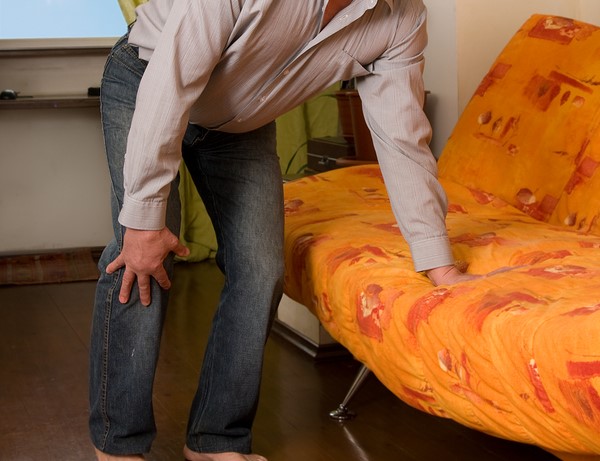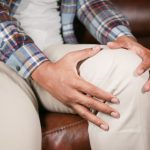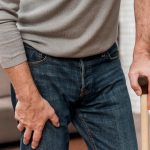Here’s a whopper of a statistic: Out of around 14 million US adults who have knee arthritis, it’s estimated that more than half of them will eventually require knee replacement surgery.
Now, going through knee replacement surgery isn’t a walk in the park (no pun intended). After surgery, you literally have to learn to walk again. And there will be a lot of physical therapy. Depending on your health, it could take several months to regain a normal gait and speed.
But here’s the thing…
Instead of waiting until you have to have a knee replacement to start doing physical therapy, why not start giving your legs the exercise they need now – and avoid knee replacement surgery altogether?
We’ve long known that keeping certain leg muscles in top form can improve knee pain and functionality in people with osteoarthritis. Now, a study presented at The Radiological Society of North America (RSNA) shows that strong leg muscles can actually help prevent knee replacement surgery.
Specifically, a higher ratio of quadriceps to hamstring volume is significantly associated with lower odds of a total knee replacement.
In the words of the study lead author, “The two muscle groups act as counter forces, and the balance between them enables a wide range of activities while protecting the knee joint.”
Additionally, higher volumes of hamstrings and the long, thin gracilis muscle on the inside of the thighs are also linked with lower odds of total knee replacement.
All of these muscle groups work together when it comes to flexion, extension, rotation and stabilization of the knees and hip.
Build Up Your Thighs to Improve Knee Health
If there is a chance that some simple exercises can keep you off the operating table, that’s a chance you want to take advantage of! And it is a lot easier to do these exercises when you’re still healthy than when you’re recuperating from a knee replacement.
Before you get started, take a ten-minute walk to help loosen up your legs. (If your knees feel stiff before starting, you can use a warm compress prior to the walk.) Then take advantage of these muscle-building exercises:
Chair Squats: Stand with your back toward a sturdy chair with your arms crossed against your chest and your feet shoulder-width apart. Bend your knees and slowly and lower your butt toward the seat of the chair while you count to five. Keep your knees straight above your ankles and your back straight as you lower yourself.
Once seated, slowly rise out of the seat to a count of three. Repeat ten times, rest for a minute or two, then perform the exercise 10 more times.
Advanced: Depending on the strength of your knees, you may be able to perform wall squats. Just place your back against the while and use it for support to slide down into the squat position and raise to standing position.
Seated Leg Raises: Sit up straight in a sturdy chair with the knees bent. Slowly extend the right leg upward until it is parallel to the floor. Hold for a count of three, then return it back to starting position. Repeat with the left leg. Do this 10 times for each leg. Perform a total of three sets of 10.
Advanced: Lie on your back. Keep one leg straight, the other bent at the knee with the foot flat on the surface. Raise the straightened leg to match the angle of the bent knee (or as close to that as you can). Return to the starting position. Repeat 10 times with each leg.
Standing Leg Lifts: Stand straight with your back against the wall. Raise your right leg out to the side and pause briefly. Return leg to starting position. Repeat with left leg. Repeat 10-15 times on each side.
Advanced: Lie on your left side with your left leg (the bottom leg) bent for support; your right leg straight. Raise the right leg upward at a 45-degree angle. Pause, then slowly return to starting position. Repeat 10-15 times, then switch sides and start over.
Walking, biking and swimming can also help strengthen your knees and prevent further damage. In fact, walking appears to work just as well to reduce pain and disability as quadriceps strengthening exercises like the ones listed above.
And water-based exercises are wonderful when it comes to low-impact activity for your knees. All you need is access to a swimming pool, lake or ocean.
The water keeps you buoyant – gravity doesn’t significantly affect you in the water once it’s above your belly button. This reduces the impact on your joints. You can jog in place, perform jumping jacks or just swim without putting any wear and tear on your joints.
Remember to ice your knees after these types of physical activity to help reduce inflammation.
A Final Tip
In addition to exercise and healthy lifestyle choices, I recommend investigating non-surgical orthopedic physicians in your area.
Options such as hyaluronic acid injections, platelet rich plasma injections, stem cell injections and exosome injections are all paving the way toward the future of pain relief, healthy cell function, tissue repair and reduced inflammation… without knee replacement surgery.
Using a qualified physician who offers these treatments may keep you from having to go through surgery and a long rehabilitation process after.
SOURCES:
Pietrosimone B, Thomas AC, Saliba SA, Ingersoll CD. Association between quadriceps strength and self-reported physical activity in people with knee osteoarthritis. Int J Sports Phys Ther. 2014 May;9(3):320-8.
Stronger Thigh Muscles May Prevent Knee Replacement Surgery. RSNA. Press Release. Nov 2023.
Liu X, Wang L, Ma C, Wang G, Zhang Y, Sun S. Exosomes derived from platelet-rich plasma present a novel potential in alleviating knee osteoarthritis by promoting proliferation and inhibiting apoptosis of chondrocyte via Wnt/β-catenin signaling pathway. J Orthop Surg Res. 2019 Dec 30;14(1):470.
Hou Y, Wen X, Zhou L, Fang X. The value of platelet-rich plasma-derived extracellular vesicles in modern medicine. Ann Med. 2023 Dec;55(2):2287705.
Khasru MR, Siddiq MAB, Jubery TAZN, Marzen T, Hoque A, Ahmed AZ, Begum M, Chowdhury FR, Salek AKM, Khan MM. Outcome of Intra-articular Injection of Total Stromal Cells and Platelet-Rich Plasma in Primary Knee Osteoarthritis: A Randomized Clinical Trial. Cureus. 2023 Feb 3;15(2):e34595.
Buendía-López D, Medina-Quirós M, Fernández-Villacañas Marín MÁ. Clinical and radiographic comparison of a single LP-PRP injection, a single hyaluronic acid injection and daily NSAID administration with a 52-week follow-up: a randomized controlled trial. J Orthop Traumatol. 2018 Aug 20;19(1):3.






